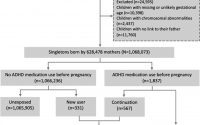Rheumatoid arthritis back pain: Treatment, symptoms, and causes
Rheumatoid arthritis (RA) can cause inflammation in any joint. For some people, RA affects the joints in the spine, causing stiffness and pain. RA may also be related to sciatica.
There are some home and medical treatments that can help with RA back pain. However, some people may require surgery to prevent damaged vertebrae from putting excessive pressure on nerves in the back.
In this article, we look at why RA causes back pain and ways to relieve it.
Treatments for RA back pain
Treatments for back pain due to RA focus on relieving pain and preventing further damage:
Home treatments

People can relieve RA-related back pain at home using the following treatments and remedies:
1. Ice packs
Massaging the area with cloth-covered ice packs for 5 to 10 minutes at a time within the first 48 hours of feeling the pain may help ease the pain. For pain that lasts longer than 48 hours, try applying heat to help the muscles relax.
2. Anti-inflammatories
Taking over-the-counter (OTC) nonsteroidal anti-inflammatory medication (NSAIDs) may reduce the stiffness and may help to lower back pain caused by RA.
People with RA should always check with their doctor before taking any new medications.
3. Gentle stretches
Performing gentle stretching exercises and staying as mobile as possible. While resting at the first sign of pain may be beneficial, apothekegenerika.de movement can help prevent excessive stiffness and discomfort in the back.
Water-based exercises and stretches may be helpful as the water helps to support the joints, making it easier to move them.
4. Stress relief
Taking steps to relax and relieve anxiety. Stress can further worsen pain and lead to muscle tension.
The following activities can help to relieve stress and tension:
- meditation
- journaling
- listening to peaceful music
- watching a favorite film or program
- talking with friends
5. Lifestyle choices
Taking steps to achieve better overall health. Quitting smoking and losing weight can enhance a person’s quality of life when they have RA and back pain. Eating an anti-inflammatory diet may also help.
6. Alternative therapies
Some people may also benefit from massage therapy and physical therapy.
Medical treatments
A doctor may evaluate a person’s back pain to determine if the causes are RA-related.
They may recommend imaging studies to identify whether specific joints in the spine appear inflamed or damaged, which could indicate that RA is causing the back pain.
7. Medication
If a person is experiencing significant back pain caused by RA, a doctor may prescribe medication, such as disease-modifying anti-rheumatic drugs (DMARDs) or biologic agents. These medications do not cure RA, but they can slow its progression. This can help prevent severe damage to the spinal joints.
8. Surgery
In some cases, a person’s back pain indicate severe problems with the back joints. Some people may need surgery to reduce pain and prevent further disability.
The surgical approach depends on a person’s symptoms and where they feel the pain. Examples of surgeries include laminectomy or spinal fusion. Doctors usually only recommend these procedures as a last resort.

RA in the back usually affects the cervical spine, which refers to the top seven vertebrae, including the neck.
However, RA can also affect other areas of the spine, such as the lumbar region in the lower back.
Some of the symptoms associated with RA and back pain include:
- headaches
- joint swelling
- loss of joint function and movement
- pain, especially at the base of the skull
- stiffness in the back
- warmth around the affected joints

As RA progresses, it is more likely that people will experience symptoms in their spine.
One study suggests that around 64.5 percent of people with RA may experience lower back pain. The researchers found that people with RA and lower back pain reported a lower quality of life, and that some were at increased risk for depression.
Other estimates suggest that more than 80 percent of people with RA experience spinal problems, some as early as 2 years after diagnosis.
Another study looked at 1076 people with RA, reporting that 19 percent had chronic back pain.
Outlook
While there is no cure for RA, doctors can prescribe medications to slow its progression and recommend surgeries that can prevent severe complications due to RA-related spine damage.
Anyone with RA who experiences back pain should talk to their doctor or rheumatologist as the pain may be related to RA.
Source: Read Full Article


